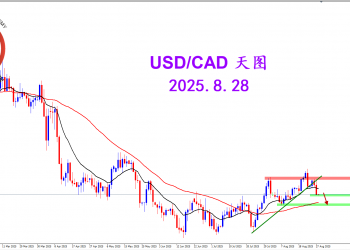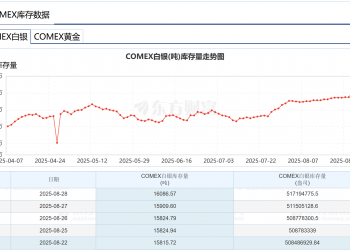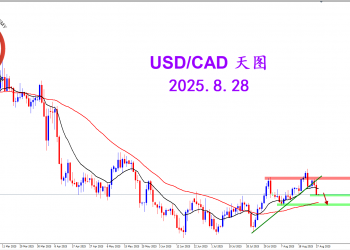WSJ 北京时间2006年03月18日09:03
纽约汇市周五美元再度走低,以大幅下跌结束了全周的交易。在本周中,经济数据疲软、投资者对美国联邦储备委员会(Federal Reserve, 简称Fed)未来加息的预期减弱以及技术面因素恶化都打击了美元的表现。
欧元兑美元本周上涨2.4%,升至将近两个月以来的最高水平。美元兑日圆本周则下跌了大约2.7%,跌至两周左右以来的最低点。
对技术分析师来说,欧元在过去一周中持续突破关键价位1.2150美元是未来继续看涨的一个积极信号。
投资者对欧洲央行(European Central Bank)的加息预期增强为欧元提供了支持。
纽约汇市周五尾盘,欧元兑1.2195美元,高于周四尾盘时的1.2175美元。
与此同时,中国人民币兑美元连续第二个交易日收盘走高,因为美国向中国施加的、要求人民币以更快速度升值的政治压力与日俱增。美国国会中在人民币问题上持最强硬态度的两位参议员Charles Schumer和Lindsey Graham下周将访问中国,市场将对于予以密切关注。市场关注的核心问题是,上述两位参议员最终是否会推动参议院就他们提出的一项议案进行投票。议案旨在提高对中国商品所征收的关税,理由是中国的汇率制度缺乏灵活性。
在过去两周中,人民币汇率出现了前所未有的大幅波动。本周三,美元兑人民币创出了最大单日跌幅,并跌至去年7月21日中国重估人民币汇率以来的最低水平。
3/20 0700 Germany Producer prices MoM Feb 1.2% 0.2%
3/20 0700 Germany Producer prices YoY Feb 5.6% 5.3%
3/20 1500 US Leading indicators Feb 1.1% -0.3%
3/20 1600 US Fed's Minehan speaks on the economy
3/20 1710 US Fed's Yellen speaks
3/21 0000 US Fed's Bernanke speaks to Econ. Club of NYC
3/21 0745 France Consumer spending Mom Feb 0.9% 0.3%
3/21 0745 France Consumer spending YoY Feb 2.5% 3.2%
3/21 1000 EC Bundebank's Weber annual press conf.
3/21 1330 US PPI MoM Feb 0.3% -0.2%
3/21 1330 US PPI YoY Feb 5.7% 4.8%
3/21 1330 US PPI core ex-F&E MoM Feb 0.4% 0.1%
3/21 1330 US PPI core ex-F&E YoY Feb 1.5% 1.6%
3/21 2200 US ABC consumer confidence w/e 3/20 -8 n/a
3/22 1000 EC Eurozone trade balance Jan -0.9 bio -4.5 bio
3/22 1000 EC Eurozone trade balance Jan -2.4 bio -2.3 bio
3/22 1000 EC Industrial new orders MoM Jan 2.5% -0.2%
3/22 1000 EC Industrial new orders YoY Jan 7.1% 11.4%
3/22 1200 US MBA mortgage applications w/e 3/17 -0.2% n/a
3/23 0900 EC Eurozone current account Jan -5.3 bio n/a
3/23 0900 EC Eurozone current account nsa Jan -0.3 bio n/a
3/23 1330 US Weekly jobless claims w/e 3/18 309K 304K
3/23 1330 US Continuing claims w/e 3/11 2.445 mio n/a
3/23 1500 EC ECB's Mersch speaks
3/23 1500 US Existing home sales Feb 6.56 mio 6.50 mio
3/23 1930 EC ECB's Trichet speaks
3/24 0700 Germany Import price index MoM Feb 0.9% 0.2%
3/24 0700 Germany Import price index YoY Feb 6.8% 6.2%
3/24 0745 France Wages QoQ 4Q 1.0% 0.5%
3/24 1330 US Durable goods orders Feb -9.9% 1.2%
3/24 1330 US Druable goods orders ex-trans Feb 0.9% 1.0%
3/24 1500 US New home sales Feb 1.233 mio 1.2000mio
the week outlook
The dollar reversed course and declined sharply this past week, very much in line with last week’s outlook, and the road ahead continues to look rocky for the US dollar. However, before we get too bearish on the greenback, it should be noted that this week’s declines have once again brought us back into the center of the range (in US dollar index terms) that has dominated since the start of 2006.
Before we get into next week’s outlook, let’s take a quick glance back to re-orient ourselves. The fluctuations in the 2006 YTD range have largely been driven by interest rate expectations between the Fed and the ECB. Looking back one week, the dollar was rallying based on the notion that the Fed might have to move interest rates beyond the 5.0% level based on underlying strength in the US economy and persistent fears of inflation pressures rekindling. That notion was abruptly dashed this week on softer US growth and inflation reports, as well as by a noted hedge fund adviser suggesting that the Fed was likely to pause in its tightening cycle after one or two more ¼% hikes. In this sense, the dollar has clearly surrendered any premium from a Fed Funds rate above 5.0%. But the trickier question is whether the dollar is also about to give up its premium from an additional two ¼ point rate hikes on 3/28 and 5/10.
At the current moment I would suggest this is highly unlikely based on renewed strength in energy prices and continued expectations of solid US growth over the next several months. Crude oil prices surged 5% on a weekly close basis, despite continued inventory build-up and reduced OPEC demand forecasts going forward. The run-up in oil stemmed mainly from tensions brewing over the US/Iran confrontation and received an added boost from re-invigorated US military operations in Iraq. The Iran risk premium seems unlikely to evaporate in the immediate future, and could potentially increase if diplomatic efforts falter (which seems likely), leaving US/allied military action as the primary means of resolving the stand-off. From the Fed’s viewpoint, though, the primary consideration is that energy prices remain high and could move higher, and this will lead them to remain pre-disposed to tightening to forestall second-round inflation effects from higher energy. The growth side of the equation, while dented by some of this past week’s data, remains relatively upbeat and in no danger of a hard-landing in the next two quarters. This also argues for two more Fed rate hikes.
US Treasury yields, having rallied late last week, reacted quickly to the advisory report suggesting a Fed pause is one/two hikes away, and yields fell back sharply to prior highs at 4.62/63 and look set to close at 4.67% on the week. More significantly, trendline support for higher yields has held and this suggests the Treasury market has recovered its balance and is returning to the view of a Fed funds rate of 5.0% in mid-May.
Gold prices recovered as the dollar collapsed, but gold’s recovery has stalled at broken trendline support from March 8, now resistance at $557/558/oz and rising. Given the extent of dollar weakness and shift in market sentiment this week, gold’s recovery looks unimpressive and is further belied by lower inflation readings reported this past week. Candlestick formations (Hanging man followed by a Doji) also suggest a resumption of the yellow metal’s decline. Only further sharp dollar weakness is likely to overwhelm this forecast, and strength on a daily closing basis over $560 would turn the outlook higher.
Turning ahead to next week’s outlook for the US dollar, the momentum and sentiment are certainly negative and there has been no dollar bounce of consequence during the whole move down. Market flow information suggests dollar selling has been broad-based, with both short-term speculative names as well as longer-term asset managers all turning bearish on the dollar at the same time. These are potentially the hallmarks of a nascent trend lower for the dollar. But the reality is that we have been here before several times in recent months, only to have interest rate expectations reverse and take the dollar higher. While I expect the dollar to remain under pressure next week, I also expect it to begin to form a base at slightly lower levels and then to recover higher in the days preceding the March 28 FOMC decision.
In US dollar index terms, the dollar’s decline has reached the 88.90 level, which has acted as a significant pivot point since mid-August 2005, and as support since January. Also of note, Friday’s daily dollar-index candlestick could be viewed as a hammer, signifying a reversal point in the sharp downdraft. For me to become more dollar-bearish and to reinforce the notion that a new downtrend is emerging, we will need a daily close below rising trendline support that currently comes in at 88.50 (drawn off the lows of Sept. 2005 and Jan. 2006). If this scenario is to play out, USD/JPY will likely lead the way. For that to happen, daily trendline support dating back to May 2005 (currently at 115.70, with additional minor support at daily lows at 115.50), will need to give way and hold on a weekly closing basis.
Events on the data/speaker front are likely to assist the dollar’s basing and likely recovery into the end of March. Monday’s Conference Board index of leading economic indicators for February is expected to show a slight decline (exp. -0.3% vs. prior 1.1%), but we already know Feb. was weaker than Jan., so dollar selling should be limited. On Monday night EST, Fed Chairman Bernanke will speak to the Economic Club of NY on “Reflections on the Yield Curve and Monetary Policy”. The topic suggests a prime opportunity for Bernanke to downplay the historical relationship of the Treasury yield curve as a predictor of future economic performance (as he has in the past), and instead highlight the underlying resilience of the ‘new’ US economy. His remarks could be pivotal in the sense of reminding markets of the still solid outlook for the US economy as well as the need to remain vigilant in the inflation fight. US February PPI on Tuesday is expected to see a slight decline in headline MoM terms, similar to that seen in CPI, but the core ex-F&E is expected to increase slightly MoM and YoY. Finally, on Friday US Feb. durable goods orders are expected to rebound and rise 1.2% on a headline basis and 1.0% in core ex-transportation.
[ 本帖最后由 phangson 于 2006-3-18 14:19 编辑 ] |
 一口气了解外汇,都是怎么玩儿的?21 人气#视频
一口气了解外汇,都是怎么玩儿的?21 人气#视频 9?13 人气#议 事 厅
9?13 人气#议 事 厅 贵金属周报(8月31日)480 人气#主 论 坛
贵金属周报(8月31日)480 人气#主 论 坛 8,291 人气#议 事 厅
8,291 人气#议 事 厅